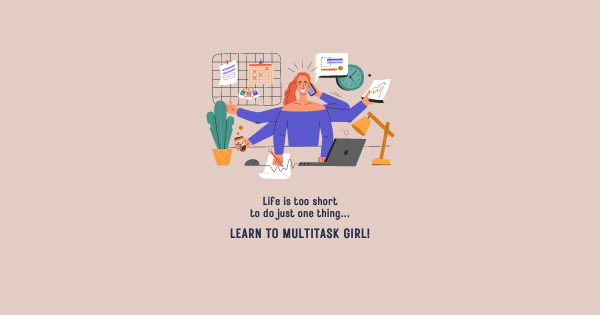
Summary:
The pursuit of multitasking prowess in the professional world is widespread, with employers often valuing the ability to manage numerous tasks at once. Nevertheless, research reveals that true multitasking can be a challenge for many. While Dictionary.com defines multitasking as the simultaneous performance of multiple tasks, studies suggest that our brains are wired for monotasking – focusing on one task at a time. The American Psychology Association (APA) asserts that attempting complex multitasking hampers productivity, contrary to its intended efficiency. A 2001 study by Rubinstein, Evans, and Meyer demonstrates that task-switching, especially with intricate tasks, consumes time and diminishes effectiveness. The study highlights the potential for more efficient multitasking by interchanging tasks of similar familiarity. Cognitive tasks merge well with routine activities, as seen in task batching, a technique where similar tasks are grouped for focused completion. Prioritizing tasks and embracing a one-task-at-a-time approach further enhances productivity. In conclusion, mastering multitasking demands strategic techniques like task batching, combining cognitive and routine tasks, and prioritization. While true multitasking’s efficacy is debated, adopting the right strategies empowers administrative professionals to excel in their roles.
Introduction:
“Must be an excellent multi-tasker”, “proven track record of managing multiple projects at once.” As recruiters we have seen this ‘requirement’ by employers featured in multiple job advertisements over the years. However, studies have shown that many of us struggle with multitasking in our work.
Dictionary.com defines multitasking as “the performance of multiple tasks at one time.” However, case studies have expanded this definition to include “the ability to swap between tasks efficiently to complete the (work)”(Law et al, 2006). While it can be challenging to perform two or more tasks concurrently, medical professionals have conducted case studies which confirm that “we’re…wired to be monotaskers, meaning that our brains can only focus on one task at a time.”
Multitasking vs Productivity:
The APA (American Psychology Association) has reported that doing more than one task at a time, especially more than one complex task, takes a toll on our productivity. Therefore generating the opposite effect of the desired goal for efficiency.
“In experiments published in 2001, Joshua Rubinstein, PhD, Jeffrey Evans, PhD, and David Meyer, PhD, conducted four experiments in which young adults switched between different tasks, such as solving math problems or classifying geometric objects. For all tasks, the participants lost time when they had to switch from one task to another. As tasks got more complex, participants lost more time. As a result, people took significantly longer to switch between more complex tasks. Time costs were also greater when the participants switched to tasks that were relatively unfamiliar. They got up to speed faster when they switched to tasks, they knew better.”
This experiment proved that multitasking or switching between complex tasks make us inefficient. However, it also provided an insight into ways that we can be more efficient. It suggests that if we switch between similar tasks, we are familiar with, we can be more effective in our time management and therefore more productive in how we work. Even capable of multitasking.
So What Kind Of Tasks Can We Effectively “Multitask?”
Continuing with this line of thought, it’s important to recognize that while true multitasking, in the sense of performing multiple complex tasks simultaneously, might not be the most efficient approach, there are still tasks that can be effectively “multitasked.” These tasks typically fall into the category of combining a cognitive task with a routine or automatic task. Let’s delve deeper into these types of tasks and how administrative professionals can leverage them to enhance productivity.
Cognitive Tasks
Cognitive tasks, such as brainstorming ideas, strategizing, or problem-solving, require a certain level of focused attention. Trying to juggle multiple complex cognitive tasks at once can lead to decreased quality and increased stress. On the other hand, combining cognitive tasks with routine activities that don’t demand as much mental effort can work well. For example, listening to educational podcasts or training materials while commuting or performing light administrative tasks can be an effective way to optimize time and learning.
Task Batching
In addition to this, administrative professionals can also explore task batching—a technique that involves grouping similar tasks together and dedicating specific time blocks to work on them. This approach allows you to harness the power of focused attention on similar tasks, minimizing the cognitive load that comes with constant task-switching. Responding to emails, returning phone calls, and reviewing documents are examples of tasks that can be batched together for increased efficiency.
Boundaries
Moreover, it’s crucial to prioritize tasks and set clear boundaries. The allure of multitasking often stems from the feeling of being highly productive, but in reality, it can lead to fragmented attention and reduced overall output. By focusing on a single task at a time and completing it before moving on to the next, you can maintain a higher level of engagement and ensure that each task is done well.
Conclusion:
In conclusion, the notion of multitasking as we traditionally understand it might not always lead to the desired efficiency. Studies and experiments have shown that attempting to perform complex tasks simultaneously can actually hinder productivity. However, by incorporating strategic task batching, combining routine tasks with cognitive ones, and adopting a focused, one-task-at-a-time approach, administrative professionals can master the art of productive multitasking. This means enhancing the use of their time, optimizing their workflow, and ultimately achieving better results in their roles. So, while not all tasks are conducive to multitasking, the right approach can certainly make a significant difference in how efficiently and effectively administrative professionals manage their responsibilities.